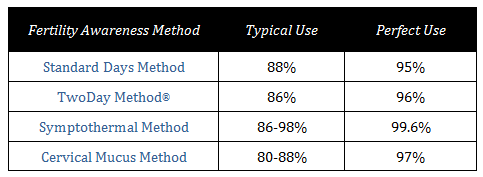Fertility awareness: Birth control and beyond!
[Originally posted as a Bedsider Article Feature here]
Understanding your body’s natural cycles can be useful for getting pregnant—and for avoiding pregnancy.
Contrary to popular myth, pregnancy is not possible every time a woman has sex. With a little bit of effort every day, it really is possible for a woman to understand which days she can get pregnant and which days she can’t. Fertility awareness techniques are not widely known, but they can be incredibly useful—for birth control, for planning a pregnancy, and for gaining a better understanding of our own bodies.
The basics of understanding your fertility
Pregnancy only happens if sperm reaches and fertilizes an egg, and eggs are only ready for fertilization in the 24 hours after release. Sperm live up to 5 days in a woman’s body, so it’s possible to get pregnant if you have sex up to 5 days before releasing an egg. In total, the window of opportunity for pregnancy is 6 days around the time that an egg is released.
The tricky thing is that a woman doesn’t necessarily release an egg (ovulate) on the same day in each cycle. To count cycle length, a woman calls the first day of her period Day 1 and counts each day after that until the next period starts. It’s common for women to have cycles around 28 days long, but anywhere from 22 to 36 days is normal. Ovulation generally happens around the mid-point of a cycle. Since cycle lengths vary, the rule of thumb “Day 14 = ovulation” is often wrong.
Let’s recap: a woman is not fertile all the time, and ovulation isn’t on the same day each cycle. The good news is that women have three basic ways to learn about their body’s fertility patterns:
1. Cycle tracking.
Keeping track of periods is the first step to learn about cycle lengths and how they change over time. There are all kinds of tools to help track cycle length, including apps, websites, and fun paper calendars. Tracking periods can help a woman be prepared for her next period and understand her body’s patterns.
2. Cervical mucus.
Paying attention to cervical fluids can tell a woman where she is in her cycle. (The cervix is the opening of the uterus.) When the fluid is wet and stretchy, it’s around the time of ovulation. To learn more about tracking changes in cervical mucus, talk to a health care provider who is an expert in fertility awareness. FYI, there are some things that can make it difficult to learn from cervical mucus, including having an infection in the uterus or vagina and having semen in the vagina.
3. Temperature.
A woman’s basal body temperature (that’s the body’s temperature when resting) changes during her cycle. Her temperature is lower during the first part of her cycle, rises to a higher level beginning around the time of ovulation, and remains at the higher level for the rest of the cycle. To track these changes, it’s important to use a special, highly accurate thermometer. Be sure to measure the body’s temperature at the same time each day, preferably right before getting out of bed in the morning.
Once a woman understands how the body’s signals relate to fertility, she can use the signals to avoid pregnancy. (BTW, women taking birth control with hormones have different patterns of cervical fluids, periods, and body temperature.)
Not all fertility awareness methods are created equal
Bedsider has summaries of multiple fertility awareness methods (FAMs). For effectiveness, there’s a range instead of just one number. With perfect use—following instructions exactly every day—FAMs are 95-99% effective. With typical use—our best information about how people use these methods in the real world—it’s 80-98%. The range of numbers shows that not all FAMs are equally effective; the details on each FAM are below.

Not all FAM apps are created equal, either
We’re all busy and juggling lots of responsibilities. While some FAMs require daily charting, there are some tools that can simplify using fertility awareness for birth control. For example, the CycleBeads® app, based on the Standard Days Method, asks a woman to enter her period start date and then alerts her to her fertile days. During those days, women can use a condom or avoid vaginal sex.
There are a lot of apps out there… Some are designed to just track periods and aren’t based on a scientifically tested FAM. Before relying on an app for birth control, make sure:
- it’s based on one of the FAMs listed in the table above,
- it states clearly who can use it, and
- you meet the requirements for using it.
Bonus round
There are plenty of reasons why women use FAM for birth control today. Check out some real stories for personal stories about why people like this method. The highlight reel:
- FAM is completely natural—no more negative hormonal side effects.
- It can give women a sense of comfort and control over their bodies.
- FAM helps get the guy involved, allowing couples to talk about sex in a different way. He may even help track fertility signs.
- It’s low cost and always available.
- FAM is green—it has little impact on the environment.
- If you decide you’re ready for a baby, FAM can help you get pregnant faster.
To learn how to use FAM for birth control, it’s super helpful to take a class in person. There isn’t a MOOC for FAM (yet!), but a local health care provider should be able to help. If they don’t teach FAM, check out the FAM instructors all over the country.
 Where We Work
Where We Work  Press Room
Press Room  FACT Project
FACT Project  Passages Project
Passages Project  Learning Collaborative
Learning Collaborative  Search All Resources
Search All Resources  Social Norms
Social Norms  Fertility Awareness Methods
Fertility Awareness Methods